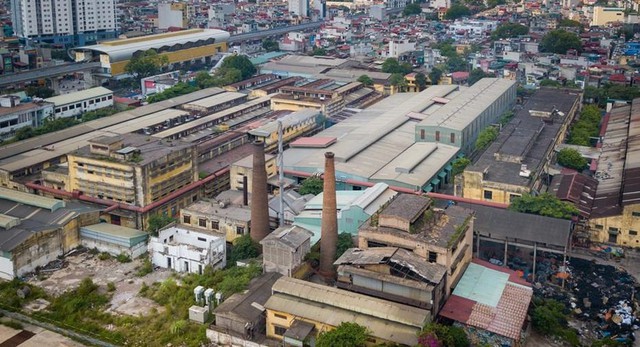Industrial heritages should be effectively ultilized, say experts
VGP - Experts proposed the local authorities set up a creative spaces of historical factories as Ha Noi is working towards joining UNESCO's creative cities network.

The country has industrial buildings with heritage value, but no industrial heritage - Illustration photo
Lack of industrial heritages
Associate Professor Pham Thuy Loan, a representative from the Asian Industrial Heritage Conservation Network in Viet Nam, said that the country had industrial buildings with heritage value, but no industrial heritage.
The concept of industrial heritage has yet to be legalized or included in legal documents, making it impossible to protect those heritages.
She said that was the biggest barrier to protecting industrial heritage in Viet Nam.
Cultural industry development is a new issue, and Ha Noi does not have much experience promoting its potential advantages.
Pham Thi Lan Anh, head of the Heritage Management Division under the Ha Noi Department of Culture and Sports, said that the city authorities paid much interest to industrial heritage and hoped this type of heritage would become part of the capital city's urban and cultural heritage.
Enough space to transform
In July this year, the Ha Noi People's Council passed a resolution containing a list of buildings that must be relocated. Of these, nine industrial buildings must be relocated within five years.
The resolution comprises a method of relocation and conversion of these buildings and a plan for management and taking-over vacant land after relocation.
However, the plan has caused many challenges for the city when there were no policies, regulations, methods of industrial heritage appraisal and no successful model of heritage reconstruction.
Architect Phan Dang Son, Chairman of the Viet Nam Association of Architects, said that it would be disappointing if the nine buildings were converted into urban areas with economic value only.
It they were rebuilt as industrial heritages, there would come opportunities for Ha Noi to turn into a creative city.
Architect Pham Trung Hieu, lecturer at the Ha Noi University of Architecture, who submitted proposals to convert the Gia Lam Train Factory, said that the relocation of nine old factories would open a huge land bank for the city.
This is an opportunity for Ha Noi to have enough space to transform and become a dynamic creative city.
Hieu suggested that the creative cultural space converted from those locations ensure three components; adaptive conservation of valuable heritage, creative community space, and space for green trees. All should be linked into a lively landscape system.
Many other architects agreed that rebuilding old factories needed to be suitable with the surrounding background, ensuring economic values, preserving culture and minimizing environmental impacts.
Those buildings should include creative spaces for exhibitions, seminars, and places to nurture start-ups.
The city and residents will enjoy not only culture but also a place to promote creative economic activities./.

